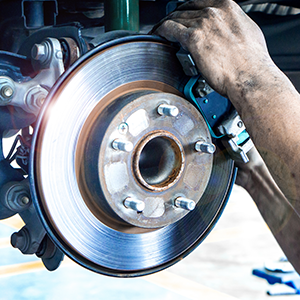Case Study - High-Temperature Lubricants for Brake Caliper Pins
 Background
Background
When caliper pins are not properly lubricated, rotors and brakes can become misaligned which generates frictional heat and accelerates wear. To extend the life of brake pads, it is critical to select a lubricant that can withstand high temperatures during braking. Lubricants must also be compatible with all braking materials including EPDMs. An Automotive OEM was looking to replace their caliper lubricant after it failed to resist water washout and could not withstand high temperatures. They came to Nye for a solution.
Challenge
- Can the grease provide adequate protection while withstanding high temperatures and resisting water washout?
Solution
Fluorocarbon Gel 880
A PTFE-thickened, heavy viscosity dimethyl silicone grease
- Resists water spray
- Prevents corrosion and oxidation
- Compatible with EPDMs
- Excellent stability at high and low temperatures
| Properties | Test Conditions | Fluorocarbon Gel 880 | Test Method |
|---|---|---|---|
| Chemistry | - | Dimethyl Silicone/PTFE | - |
| Service Temperature Range | - | -40 to 200 °C | - |
| Kinematic Viscosity | 100 °C | 7349 cSt | ASTM D-445 |
| Kinematic Viscosity | 40 °C | 18407 cSt | ASTM D-445 |
| NLGI Grade | - | 2 | ASTM D-217 |
| Oil Separation | 24 hours, 100 °C | 0 % | ASTM D-6184 |
| Evaporation | 24 hours, 121 °C | 0.06 | NYE CTM |
Results
When selecting lubricants for caliper pins, a high viscosity grease with a temperature range of -40 to 200 °C is ideal. Lubricants with a high viscosity stay in place will not move away from the contact area and provide a strong lubricating film. Nye sent the customer a sample of Fluorocarbon Gel 880. The grease met their temperature and water resistance requirements and was approved for use in their braking application.

